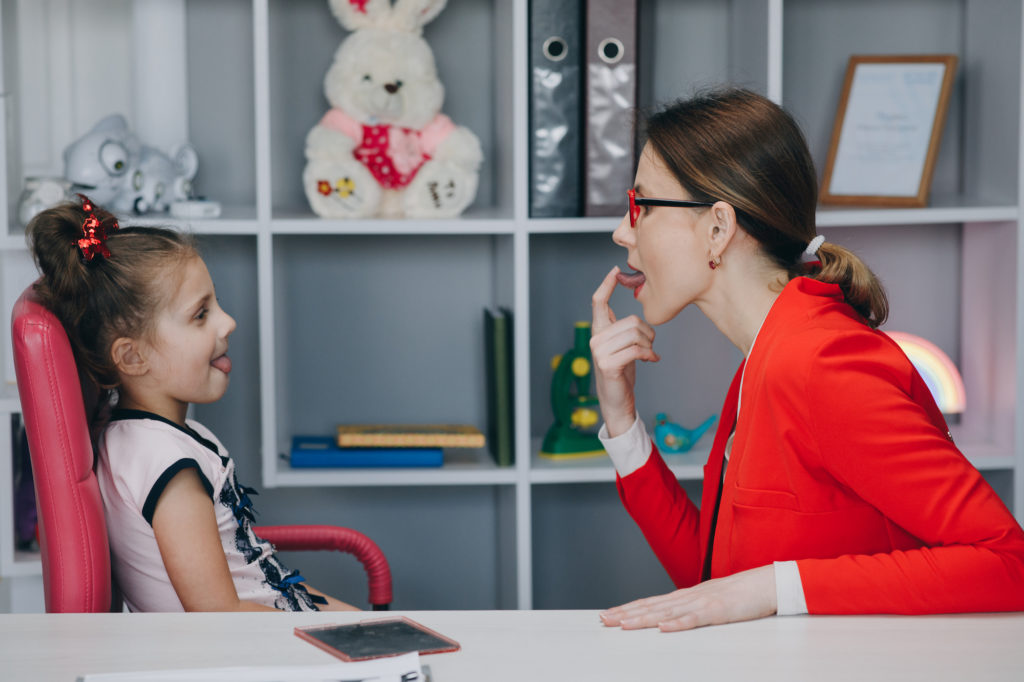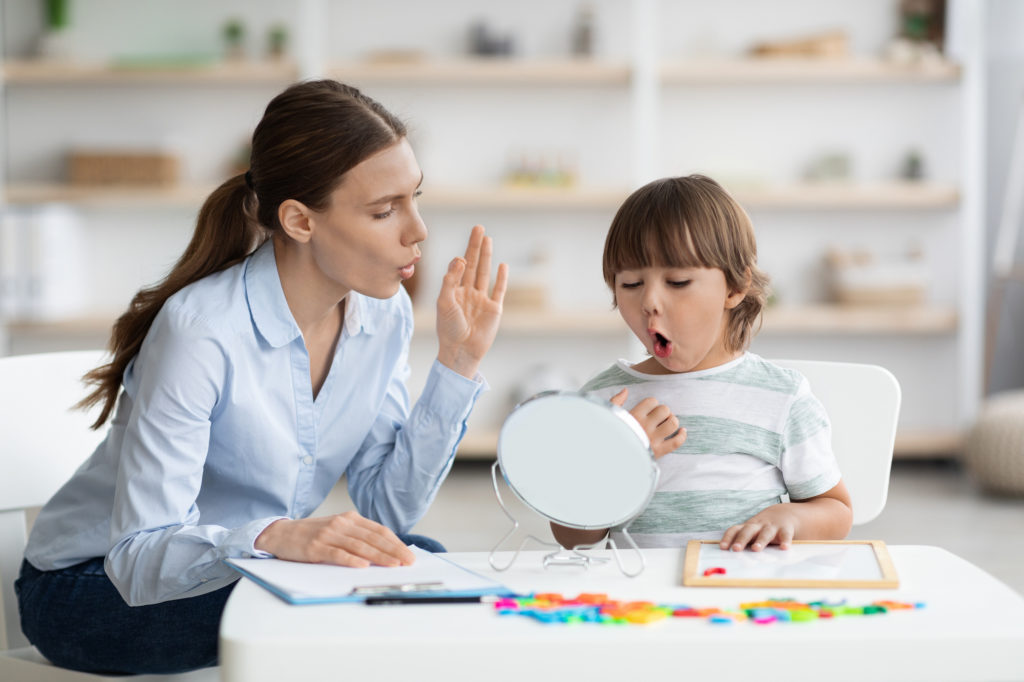SPEECH LANGUAGE PATHOLOGY AND OCCUPATIONAL THERAPY
Speech Pathology
Receptive Language
Receptive language is the foundation for all communication. Receptive language includes understanding everything we hear, read, and observe in our environment. Primary areas of receptive language include understanding vocabulary, following directions, understanding non-verbal language, being able to respond to questions, and understanding all types of communication around you that help us function each day.
Expressive Language
Expressive language therapy focuses on improving your ability to express your needs, wants and ideas effectively. Expressive language therapy may focus on improving expressive vocabulary, expanding sentences, adding details, answering questions, making comments, sharing experiences, and the use of correct grammar.
Social Skills
Social skills are imperative for positive and effective communication with peers, family, and work/school situations. Whether you are a teenager trying to fit in at school or an adult struggling in the workplace, we have tools to improve these skills across environments. We help with understanding non-verbal language (gestures, body language, facial expressions, etc), non-literal language (sarcasm, jokes, idioms, inferences, “reading between the lines”, etc.),establishing and keeping friendships, having conversations and being an effective communicator others want to communicate with.

Problem Solving
Communication is complicated. Many social breakdowns stem from struggling to understand the problem, or another person’s perspective. Persons with language difficulties frequently struggle to understand expectations, comprehend the size of the problem and the emotional response that goes along with that problem, causes of problems or conversation breakdown, and finding plausible solutions. Our SLP’s provide tools and support to effectively solve real-life language based problems for people of all ages.
Executive Functioning
People with ADHD, autism, neurological impairments (such as stroke, Alzheimer’s, dementia) and other learning difficulties frequently demonstrate difficulties in executive functioning skills. These skills may including organizing, planning, task initiation/completion, using strategies to to meet the challenges in our daily lives such as change, social perception, attention and assistance with self-regulation to provide the balance necessary to be successful. Therapies may include identifying challenges, planning, organizing, completing tasks, and learning and implementing compensatory strategies to improve social/emotional functioning and attention.
Speech Articulation
Articulation therapy focuses on the improvement of speech sound production, making our words and thoughts clear. Children and adults with articulation and phonological disorders, benefit from instruction to improve their speech intelligibility. What you say matters, and we are here to help you!

Stuttering
Stuttering may impact communication confidence and success in some, or all, environments. Speech fluency is related to rhythm, rate of speech, smoothness and effort required to communicate. Using a combination of a cognitive approach and fluency shaping and modification techniques to decrease disfluencies helps the individual improve self-awareness and control and minimize their stuttering.
Dysarthria
Dysarthria is the result of weakened or paralyzed muscles of speech. You may need speech therapy to regain or improve speech skills to facilitate functional communication skills. Dysarthria therapy includes learning ways to adjust speech rate, increase breath support, strengthen muscles, and improve speech clarity.
Apraxia
Apraxia is a motor speech disorder resulting in a speech sound disorder. Therapy strategies and tools are individual to the specific needs of the client and will help improve overall speech clarity and production most of the time. In some cases, the use of augmentative communication may best support the client’s needs for communication.
Dyslexia
Dyslexia, a language based learning difference that impacts reading skills in 1 in 5 people. Treatment targeting phonological awareness, decoding, reading comprehension, and more help the individual improve receptive communication with the written word. In many cases articulation and phonological awareness are both areas of need.
Written Language/Spelling
Written language therapy encourages the relationship between spoken and written language. Our staff facilitate improved grammar, organization of materials and expressing ideas in written form.
Reading Comprehension
Reading comprehension is imperative for all ages of life. Using structured programs, we target a variety of reading and comprehension skills to improve the key component of reading comprehension.
Auditory Processing
Our ability to process information we listen to is auditory processing. When and individual demonstrates difficulty processing the information they hear, this affects their ability to learn and perform day to day tasks. The individual may need repetition of material, help in noisy environments, interpret information literally, and demonstrate difficulty retaining information with multiple steps or long sequences. Therapy strategies break down these skills into smaller parts and help the person build these skills back up for improved comprehension of the world around them.

Occupational Therapy
What is OT?
Pediatric occupational therapy helps children gain independence while also strengthening the development of fine motor skills, sensory motor skills, and visual motor skills that children need to function and socialize.
Occupational therapy and speech therapy overlap in many areas, due to how directly connected the different parts of the human body are with one another. Typically, physical therapy treats the lower body, occupational therapy treats the upper body and speech therapy focuses on treating the jaw, lips, throat and tongue. The interrelatedness of occupational therapy and speech and language skills is a perfect example, as many areas of difficulty addressed by an occupational therapist (OT) relate directly to a child’s speech and language development (play skills, social skills, etc.). The OT and speech-language pathologist (SLP) will often work closely together to focus on maximizing functional progress during therapy, in order to help new skills carry over into a community or school setting.
Why choose OT?
A child’s role in life is to play and interact with other children. Our pediatric occupational therapists evaluate a child’s current skills related to play, school performance, and daily activities and compare them with what is developmentally appropriate for that age group. OTs help children perform daily activities they may find challenging by addressing sensory, social, behavioral, motor, and environmental issues.
Who may benefit from OT?
Children may require occupational therapy with or without the presence of a medical condition. Kids with the following medical conditions are considered to be ‘at risk’ for delays in skills impacting participation in home and school environments.
- birth injuries or birth defects
- sensory processing disorders
- traumatic injuries (brain or spinal cord)
- learning problems
- autism/pervasive developmental disorders
- behavioral problems
- developmental delays
- post-surgical hand conditions
- spina bifida
- cerebral palsy and other chronic illnesses
What can be accomplished through OT?
Occupational therapists work with children in the following areas:
- improving fine motor skills so they can grasp and release toys and develop good handwriting skills
- addressing hand-eye coordination to improve kids’ play and school skills (hitting a target, batting a ball, copying from a blackboard, etc.)
- learning basic tasks (such as bathing, getting dressed, brushing their teeth, and feeding themselves)
- maintaining positive behaviors in all environments (e.g., instead of hitting others or acting out, using positive ways to deal with anger, such as writing about feelings or participating in a physical activity.
- evaluating the need for specialized equipment, such as wheelchairs, splints, bathing equipment, dressing devices, or communication aids
- improving attention and social skills to allow development of interpersonal relationships.
